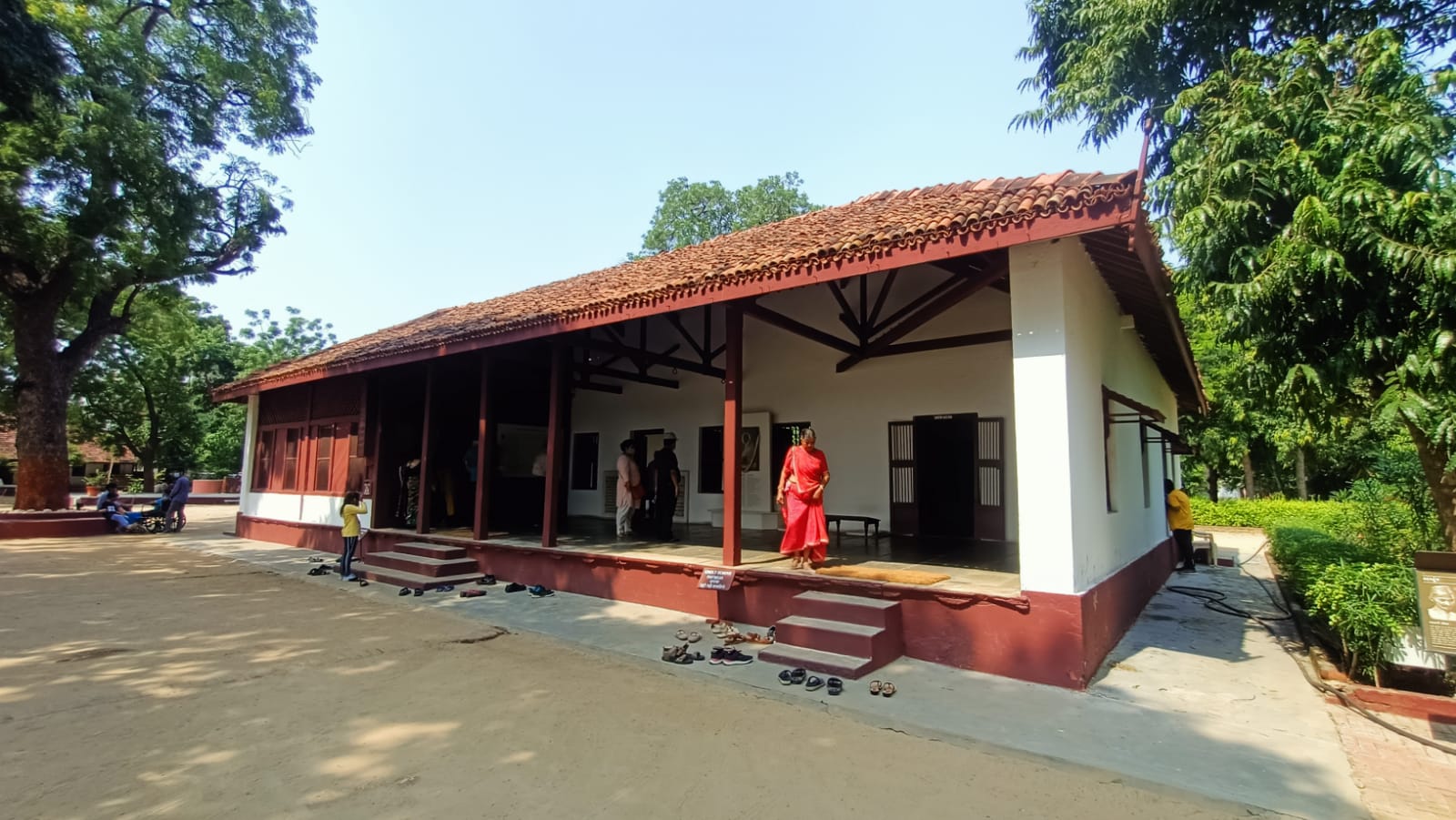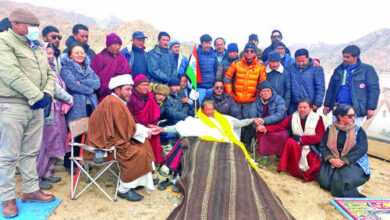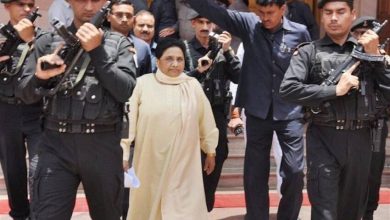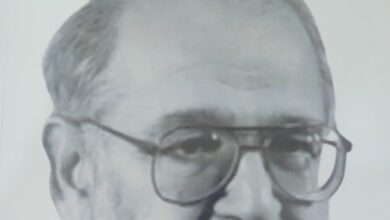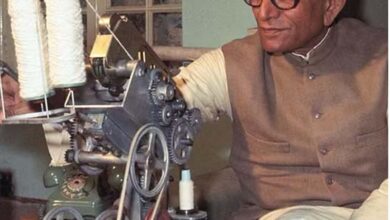Sabarmati Satyagraha Ashram : Gandhi’s Laboratory for Nonviolent Combat
Ashram should be preserved and maintained in its original form for posterity
Siby K. Joseph

The outbreak of Plague in Kochrab village gave a signal to Gandhi to shift his Satyagraha Ashram which he established in 1915. Punjabhai Hirachand, a merchant in Ahmedabad, helped Gandhi in identifying a site near Sabarmati Central Jail. Gandhi knew that the sites selected for jails have generally clean surroundings and the new site in the vicinity of jail would ensure the safety of the inmates.
The Ashram shifted to the banks of river Sabarmati on 17 June 1917.The new location of the Ashram according to mythology was the ashram site of Dadhichi Rishi who had donated his bones for a righteous war. Gandhi too was engaged in such a war through the weapon of nonviolence. It was located between a jail and a crematorium and Gandhi believed that a satyagrahi has to invariably go to either of these places.
The Ashram at Sabarmati was the home of Gandhi from 1917 until 1930. He used it as base for his satyagraha struggles and constructive activities for achieving swaraj. He shifted to this location in the midst of Champaran Satyagraha. The ashram was eyewitness to a number of nonviolent struggles including historic Non-Cooperation Movement and Dandi March.
Please also read
Gandhi started his experiments in spinning and weaving from here and made Khadi as the symbol of economic liberation of the country. He continued his experiments in education which he started during the South African days and ultimately resulted in the establishment of Gujarat Vidyapith in 1920 in the midst of the Non-Cooperation Movement.
He fine tuned the observances and vows every inmate of the ashram has to follow. The object of this ashram was that “its members should qualify themselves for, and make a constant endeavour towards, the service of the country, not inconsistent with universal good.”
The vows included Truth, Non-violence, Brahmacharya, Control of the Palate Non-Stealing, Non-Possession, Swadeshi, Fearlessness, Removal of Untouchability, Varnashrama Dharma and Tolerance. Physical labour was added by Gandhi later. It is significant to note what Gandhi wrote about Varnashrama Dharma.
He out rightly rejected the caste distinctions. “In the Ashram caste distinction has no place. It is believed that caste distinction has caused harm to the Hindu dharma. The ideas of the superior and inferior status and pollution by contact implied in caste distinction serves to destroy the dharma of non-violence. However, the Ashram does believe in Varna and the Ashram dharma. The division of Varna is based upon occupation. One who follows that division lives by his parents’ occupation, not inconsistent with larger dharma, and spends his spare time in acquiring and advancing true knowledge as well as performing service.”
Gandhi’s secretary Pyarelal and Dr. Sushila Nayar explain what role Gandhi envisaged for the Ashram in the national struggle for freedom. “He looked forward to the day, he said, when he would call out by name one after another the inmates of the Ashram, trained in those disciplines, and send them to immolate themselves at the altar of nonviolence. Unmoved, he would watch them fall before a shower of bullets, without a trace of fear or hatred, but only love in their hearts. And then, when the last one of them had fallen,he would himself follow. It would be red-letter day in the Ashram’s history”.
In a sense his call for Salt Satyagraha and the supreme sacrifices the Ashram inmates and followers made in the course of struggle proved worth of his Ashram and its inmates. It was from here on 12 March 1930 that Gandhi launched the famous Dandi march 241 miles from the Ashram with 78 companions in protest of the British Salt Law that finally led to disbanding of the ashram and rededicating it for the cause of Harijans . Therefore, this Ashram is also known as Harijan Ashram.
The places of attraction in this ashram include a small cottage known as ‘Hridaya Kunj’ where Gandhi and Kasturba lived from 1918 to 1930; old Ashram guest house which accommodated the stalwarts of freedom struggle ; Vinoba Kutir named after Acharya Vinoba Bhave who stayed here stayed here from 1918 to 1921, and also known as Mira Kutir after Madeleine Slade (Miraben), Gandhi’s disciple, daughter of a British Admiral who stayed here from 1925 to 1933;.
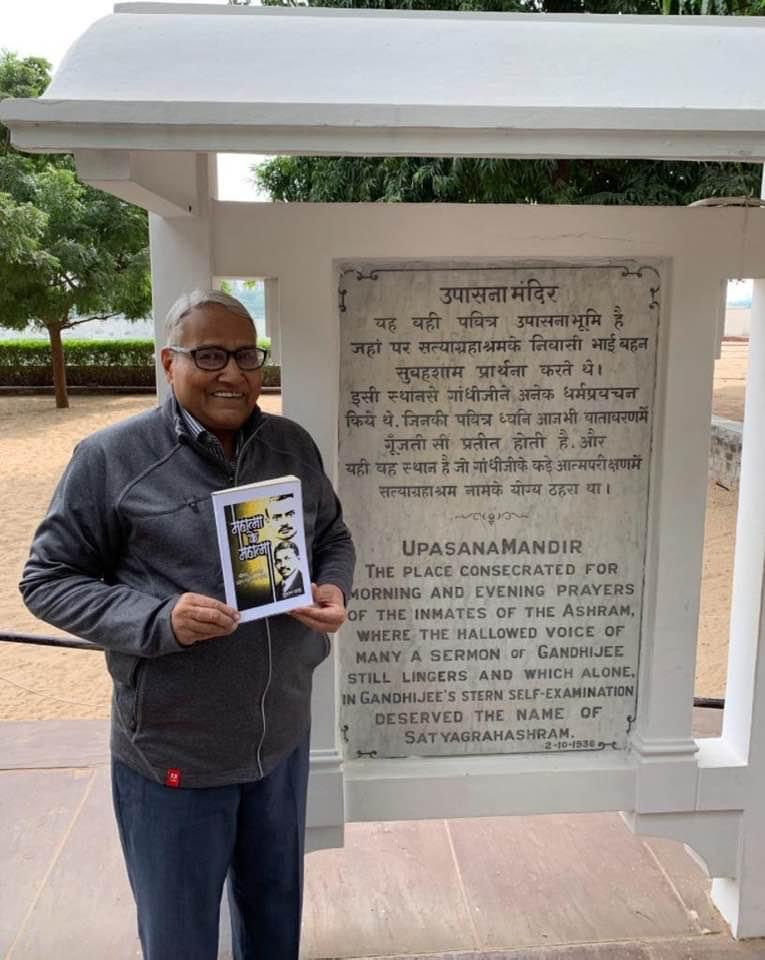
Upasana Mandir-an open-air prayer ground, situated between ‘Hridaya Kunj’ and ‘Magan Kutir’ (the hut where Maganlal Gandhi, the ashram manager, used to stay and Udyog Mandir founded in 1918 during the strike of mill workers of Ahmedabad. In the beginning Gandhi lived in one of its small rooms. Also Somnath Chhatralaya which was used as a community living quarters for students of the Ashram school, participants of Swadeshi and Constructive Work Training Programmes.
An important feature of the Ashram is Gandhi Sangrahalaya, which was inaugurated by India’s first Prime Minister Pandit Jawaharlal Nehru on May 10, 1963. On the eve of its opening he said: “I thank you for inviting me to this old place, full of memories. It is good that you have built here a museum – a beautiful museum. Beautiful not because somebody has put up a huge building using marble and such things- for that is not proper. …. I have seen some other museums: once at Madurai (which I opened); and the Gandhi Museums at Delhi and elsewhere; but I very much like the way this one is built over here. Whatever little I have seen has been done with an understanding and of a sort which suits this holy place. There is nothing pretentious here, but in itself shows that is a very simple and lovely thing. And that is why I am pleased to see it.”
It has three galleries viz. Gandhi in Ahmedabad Gallery, Painting Gallery and My Life is My Message Gallery. In addition it houses the Ashram’s library and archives which has a collection of 34 111 letters-either to Gandhi or from him; original as well as Photostat copies, 1 371 manuscripts of Gandhi’s articles and about 50, 000 books including rare books on India’s Freedom Movement.
This Ashram has been a source of inspiration for people all over the world including world leaders, nonviolent activists and the common people. Ravindra Varma, freedom fighter, Gandhian activist and scholar wrote in the guest book of the ashram after his visit. “Sabarmati will remain a source of inspiration to those who are seeking a new path to a peaceful society, where there is real swaraj, individual and collective.
One cannot visit the Ashram without feeling the impact of Great Seer and Pioneer who showed us the way from here, without feeling the need for constant introspection and Sadhana, both for individual and society, without marveling at the power and practicability of Truth and Nonviolence, its eternal relevance to the mankind.”
The Ashram will remain the source of inspiration and guidance, a monument of Gandhi’s life and its mission and a testimony of his nonviolent struggles. It should be preserved and maintained in its original form for posterity. It is the duty of all stakeholders including the government.
About the Author
Dr. Siby K. Joseph is a noted academic and Gandhian Scholar having more than two decades of teaching and research experience. The books written and edited by him were published by Routledge, Concept, Manohar and many other publishing houses. His most recent writings are Lanza del Vasto: A Messenger of Peace (2018) Gandhi in South Africa: A Racist or A Liberator? (2019) Kasturba Gandhi: An Embodiment of Empowerment (2020).This Article is a part of series of articles on Ashrams established by Mahatma Gandhi.
Dr. Siby K. Joseph is Director, Sri Jamnalal Bajaj Memorial Library and Research Centre, Sevagram Ashram Pratishthan, Wardha-442102, Maharashtra.

